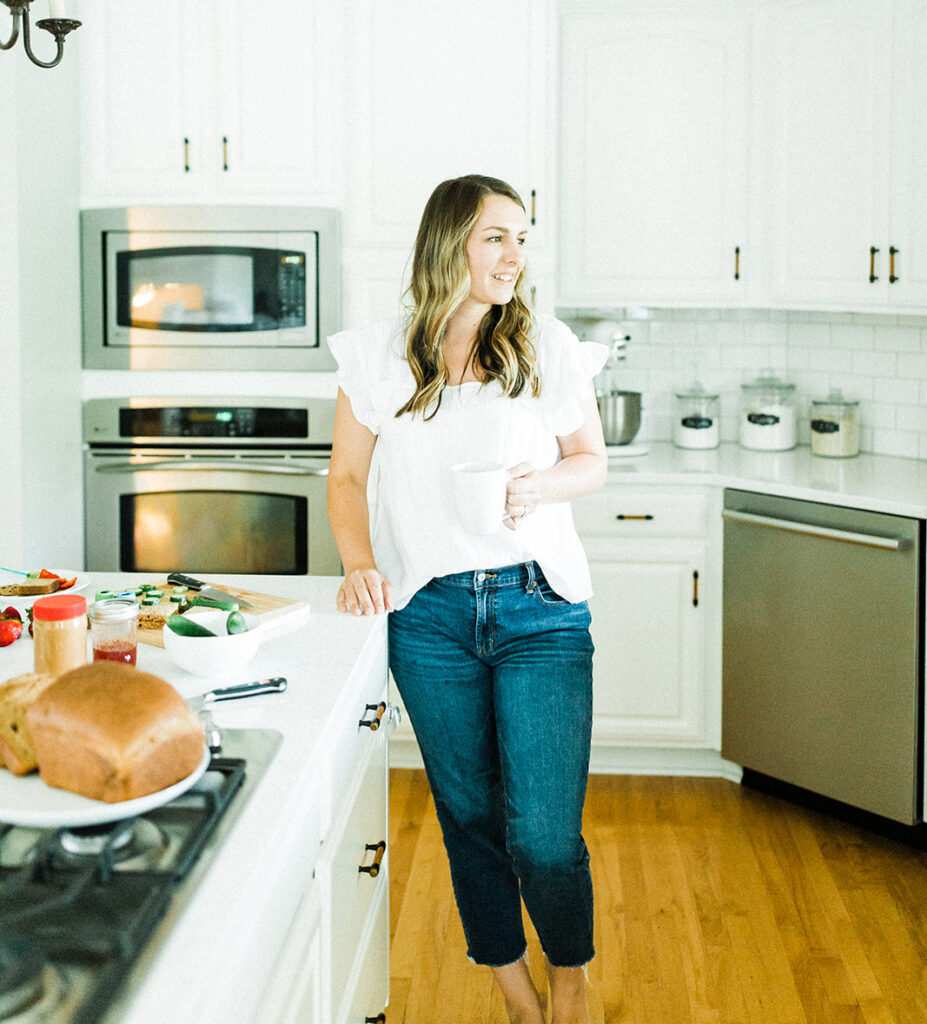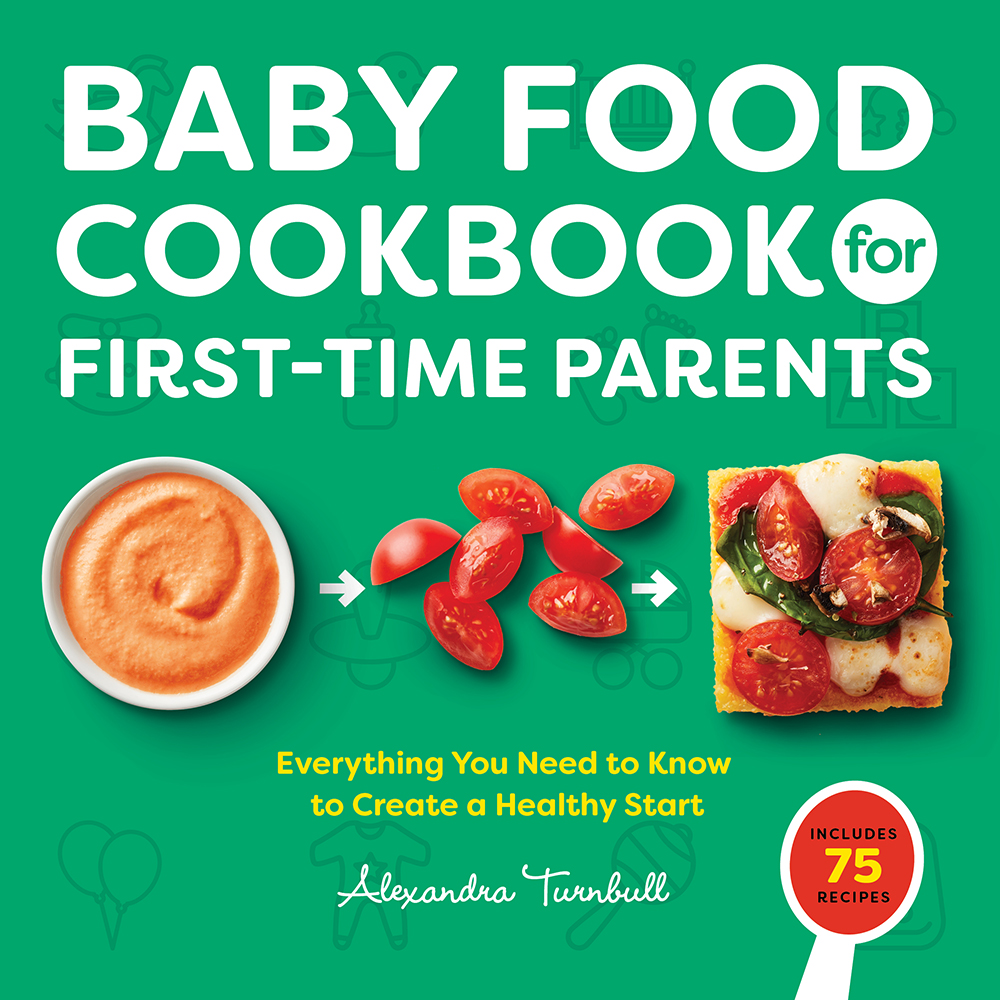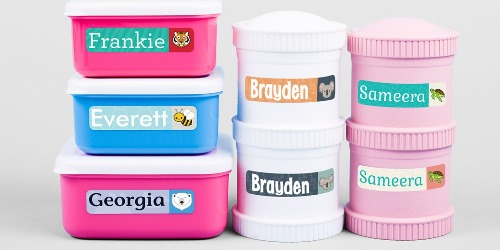This post may contain affiliate links. Thanks for supporting my small business at no extra cost to you!
Cereal is one of the most commonly eaten breakfast foods in the United States, especially by children.
Children tend to like it and it requires no cooking; two things that make life easier for parents.
But parents don’t always love how much sugar comes with it. As a pediatric dietitian and mom of cereal lovers, I’m sharing my favorite children’s cereal, why I love each one, how to minimize added sugar in your child’s favorite cereal, as well as the nutritional benefits of cereal.
I even break down the cost difference between my favorite children’s cereal so be sure to keep reading to find out which one gives you the best bang for your buck.
Table of Contents
Nutritional Value in Cereal
Cereal often gets a bad reputation and many claim that all it contains is sugar and sugar is poison. This is not true, so don’t believe it for one second.
Cereal has so much to offer, including fiber, protein, and many (MANY) vitamins and minerals. Not to mention it contains our body’s main source of energy; carbohydrates.
Carbohydrates
The main ingredients in cereal are some sort of grain, typically oats, corn, wheat, or rice. All of these will contain carbohydrates, which is an important macronutrient (one of the main nutrients), for your child to have plenty throughout the day.
Fiber
Fiber is a carbohydrate, that’s why you’ll see it listed under carbohydrates on the nutrition label. And it’s a carbohydrate that our body can’t digest but has oodles of health benefits.
Health Benefits of Fiber For Kids
Cereals that are made with whole grains tend to have more fiber. To identify if a cereal is whole grain, look for the word “whole” within the first two ingredients in the ingredient list. You can also look for the whole grain stamp on the box.
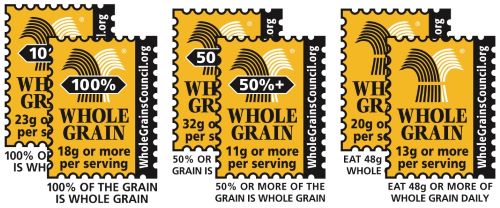
When it comes to how much fiber you want in your child’s cereal, I like to aim for 3-5 grams per serving.
To find other foods with fiber for your child, click here.
Vitamins and Minerals
Breakfast cereals are typically fortified with a variety of vitamins and minerals and these include:
- Vitamin A
- B Vitamins
- Vitamin D
- Folic Acid
- Zinc
- Iron
- Calcium
Many of these vitamins and minerals that children’s cereal is fortified with are extremely important and may be harder for children to consume regularly, especially picky eaters.
Fortified cereals can be extremely helpful for vegetarians and vegans. Iron, zinc, and many B vitamins are more abundant in animal meats, so fortified cereals can help bridge those gaps for those who choose not to eat meat.
Oftentimes children, especially picky eaters, have a hard time eating and chewing animal proteins, foods that commonly contain many of the vitamins and minerals fortified in breakfast cereals.
Breakfast cereals can be a convenient and affordable way for children to meet these nutrient needs that are crucial for their growth and development.
You can identify if a cereal has been fortified by looking for the laundry list of vitamins and minerals on the nutrition label.
Added Sugar in Cereal
Yes, yes, I know. Children’s cereal can have loads of added sugar. Heck, I grew up eating many of those cereals and yes, my kids eat them sometimes too.
The good news is that there are many options that contain either no or lower amounts of added sugar.
When it comes to shopping in the cereal aisle, I like to look for a cereal with 10 grams or less of added sugar.
Why 10? Why not lower?
Lower or none at all is great, but I also understand the bigger picture that lower may not work for all families.
I also worked in school food service for six years and fed thousands of children breakfast daily. The plain cereals weren’t a big hit.
I try to keep it realistic and meet in the middle. I know some families, myself included, will choose cereals with more than 10 grams of added sugar at times. While others opt for the no added sugar.
I like to provide families with flexibility because choosing a cereal isn’t just about how much added sugar it contains. There are so many factors that go into why parents purchase the foods they do:
- Cost – some of the no-added sugar or “healthy” cereals are more expensive.
- Availability – it really depends on what’s available at their grocery store
- Taste – not everyone loves plain cereals
And the fact of the matter is, children, and adults as well, are going to eat cereal. Not all of them and maybe not every day, but it’s a convenient breakfast choice that I don’t see going away.
Minimizing Added Sugar in Children’s Cereal
What if your child only likes the sugar-loaded breakfast cereal and you’ve tried numerous varieties with lower added sugar?
Try to mix your child’s favorite breakfast cereal with a plain cereal that resembles the same shape.
My son loves Froot Loops, but I don’t love how much sugar they have, so I mix it with plain Cheerios to cut down on the added sugar.
What if that won’t convince your child and there’s no way they’ll go for a half and half mixture?
You can simply minimize the amount of times it’s offered. Maybe they get their favorite cereal every other day, once a week, or when the box is gone, it’s gone until you purchase it again.
Ways to Minimize Added Sugar in Children’s Cereal
- Choose a low or no added sugar cereal (10 grams of added sugar or less)
- Mix their favorite cereal with a plain version
- Offer their favorite cereal minimally throughout the week
It’s not the end of the world if your child eats and enjoys a children’s cereal that has more added sugar. Focus on what you can add to the rest of their breakfast to add value.
For instance, adding a cup of milk to their cereal adds 8 grams of protein and some fat too (will depend on the type of milk you choose).
Don’t forget to add a fruit or even a veggie to their breakfast too!
9 Best Children’s Cereal
I’m sharing my favorite children’s cereals and why I love them as a convenient breakfast option for kids.
I’ll also share fiber, protein, and cost for each as well. Cost will vary based on location, but it will give you a general idea. I also took it a step further and did all the math to compare costs equally for 1-cup servings even when the box isn’t a 1-cup serving.
Prices are based on products available on Amazon
Cheerios
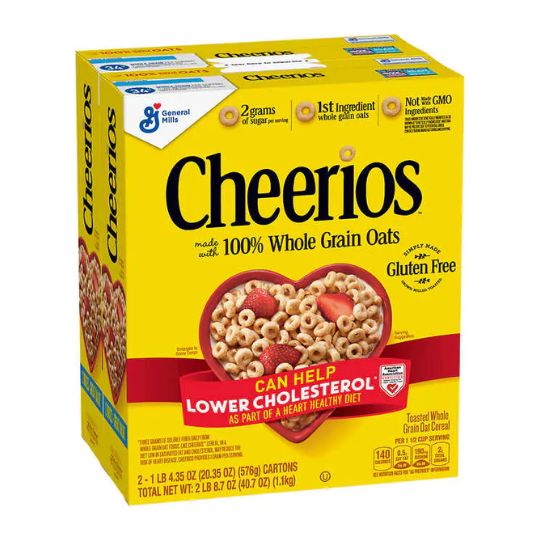
I love that regular Cheerios contain no added sugar, but the main reason why love them is because they have 8 mg of iron in a 1 cup serving which is 100% of children 4-8’s daily requirements.
Per 1 cup serving
Added sugar: 0 g
Fiber: 2.5 g
Protein: 3 g
Price: $0.45 per oz, $0.44 per 1 cup serving
Multigrain Cheerios
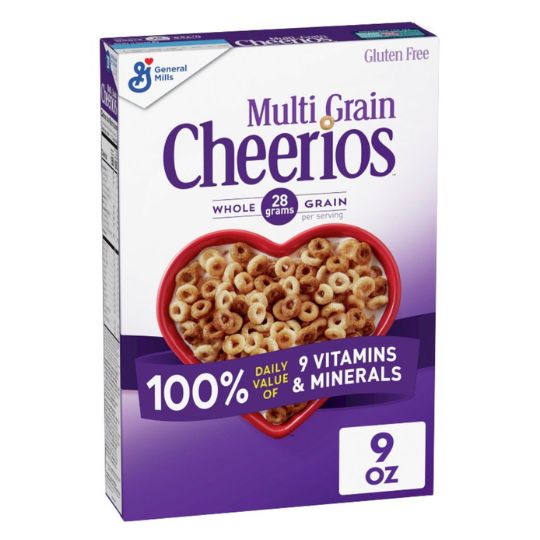
I personally do not love plain breakfast cereals. Multigrain Cheerios, with only 6 grams of added sugar per 1 cup, are the perfect amount of sweetness for me. And my son loves them too.
Per 1 cup serving
Added sugar: 6 g
Fiber: 2 g
Protein: 2 g
Price: $0.44 per oz, $0.50 per 1 cup serving
Quaker Brown Sugar Oatmeal Squares
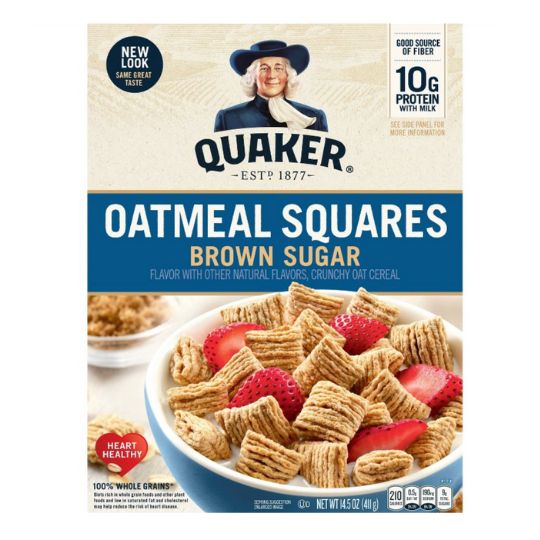
Quaker Brown Sugar Oatmeal Squares are one of my favorite breakfast cereals. I absolutely love how much fiber they contain, 5 grams per 1 cup, so I know when I give them to my kids for breakfast or even a snack, it will help keep them fuller longer!
And it doesn’t stop there, I also love that they contain 6 grams of protein and 16.5 mg of iron per cup – wow!
Per 1 cup serving
Added sugar: 9 g
Fiber: 5 g
Protein: 6 g
Price: $0.26 per oz, $0.54 per 1 cup serving
Cascadian Farms No Added Sugar Mixed Berry

It’s hard to beat a no-added-sugar cereal that also has flavor! I love that this Cascadian Farms Mixed Berry cereal uses dried blueberries and strawberries for flavor plus more fiber (6 grams)!
The only downside is that it is on the pricier side, but you’re also getting more nutrients for your money.
Per 1 cup serving
Added sugar: 0 g
Fiber: 6 g
Protein:5 g
Price: $0.37 per oz, $0.72 per 1 cup serving
Cinnamon Chex
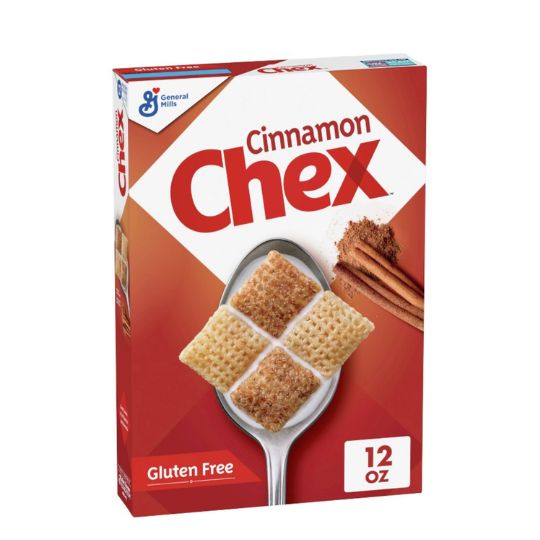
If your kids like Cinnamon Toast Crunch and you’re looking to lower the added sugar in their cereal, Cinnamon Chex would be a great alternative with only 8 grams of added sugar compared to 12 grams.
Per 1 cup serving
Added sugar: 8 g
Fiber: 2 g
Protein: 2 g
Price: $0.35 per oz, $0.52 per 1 cup serving
Honey Nut Chex
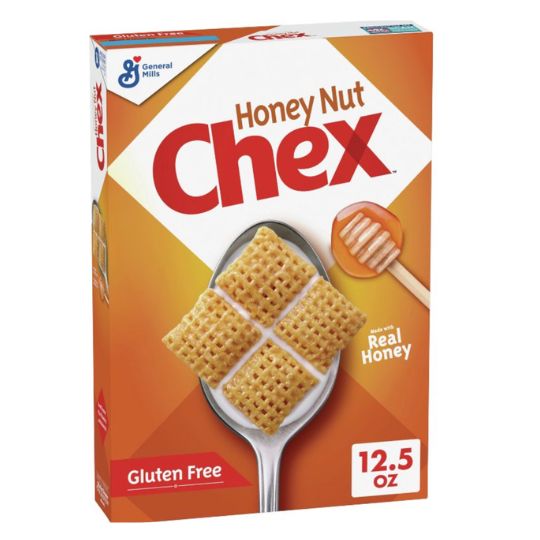
I like Honey Nut Chex as an alternative to Honey Nut Cheerios, which has 12 grams of added sugar. When you’re feeding kids that small difference can add up over time.
Don’t get me wrong, I grew up eating Honey Nut Cheerios, but if you can find a reasonable alternative with less added sugar, it doesn’t hurt to try it!
Per 1 cup serving
Added sugar: 9 g
Fiber: 2 g
Protein:2 g
Price: $0.21 per oz, $0.32 per 1 cup serving
Chocolate Chex
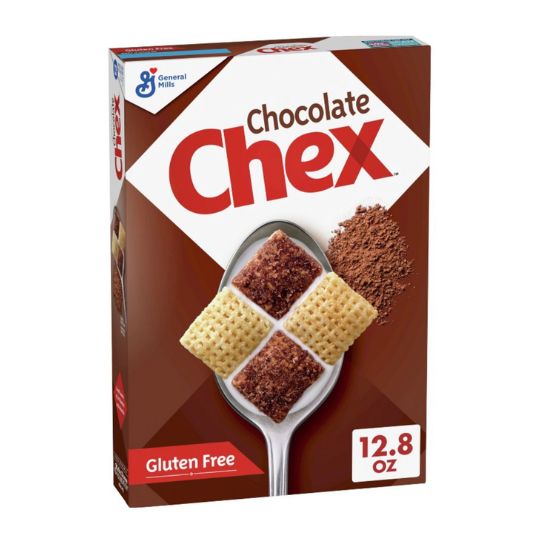
It’s hard to find a chocolatey children’s cereal that’s not loaded with added sugar. Chocolate Chex is a happy medium with only 10 g of added sugar.
If you want to decrease the added sugar even more, mix it with plain Rice Chex.
Per 1 cup serving
Added sugar: 10 g
Fiber: 2 g
Protein: 2 g
Price: $0.24 per oz, $0.36 per 1 cup serving
Peanut Butter Chocolate Cheerios
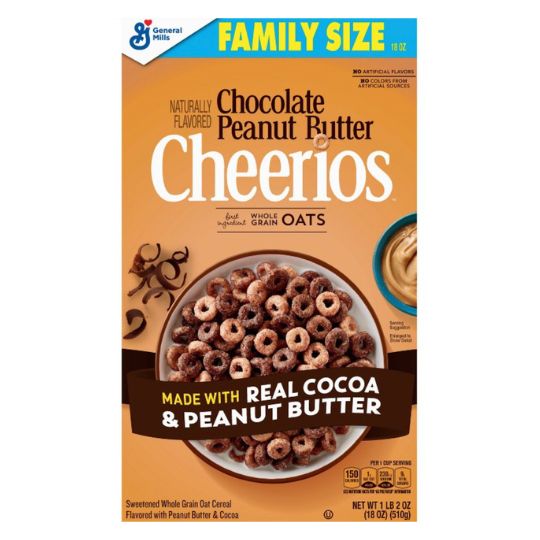
Another sweet option with under 10 grams of added sugar. It’s hard to go wrong with Peanut Butter Cheerios. Plus you get 3 grams of fiber and 4 grams of protein which is more than most cereals, including other Cheerio varieties.
Per 1 cup serving
Added sugar: 9 g
Fiber: 3 g
Protein:4 g
Price: $0.27 per oz, $0.35 per 1 cup serving
Kix
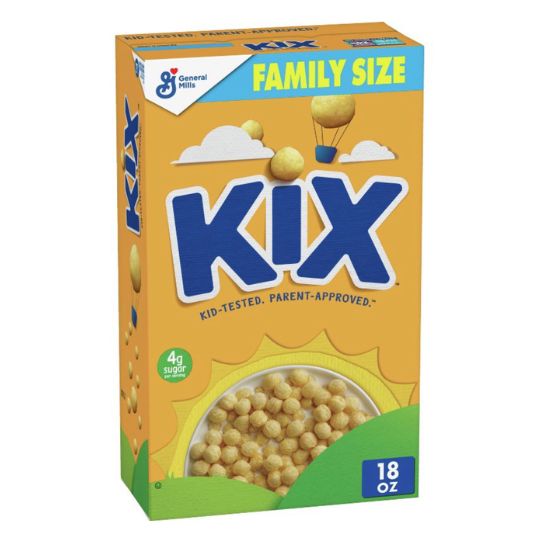
For the cost, Kix is a great option for children’s cereal because it has minimal added sugar (3 g), but still has enough sweetness making it tastier than a plain cereal.
I also love that it contains 7 mg of iron per 1 cup serving as well.
Per 1 cup serving
Added sugar: 3 g
Fiber: 2 g
Protein: 2 g
Price: $0.27 per oz, $0.25 per 1 cup serving
PITCHER/CONTAINERS
Conclusion
Cereal is a convenient breakfast option for kids that requires no cooking and kids can even prepare themselves.
Many cereals are made with whole grains, providing fiber to help keep kids fuller longer. Most cereals are also fortified with vitamins and minerals helping to fill common nutrient gaps with B vitamins, Iron, Zinc, and Calcium.
If you’d like to minimize added sugar at breakfast for your child, but still offer children’s cereal, look for varieties with no added sugar or less than 10 grams, try mixing plain cereals with your child’s favorite sweet cereal, and add low or no added sugar sides.
As a pediatric dietitian and mom of cereal lovers, I’m here to tell you that cereal can be one of many options you provide your child with for breakfast, a snack, or any meal for that matter.
Still want more tips, grab my Ultimate Cereal Guide for Parents to help you shop the cereal aisle with confidence.

